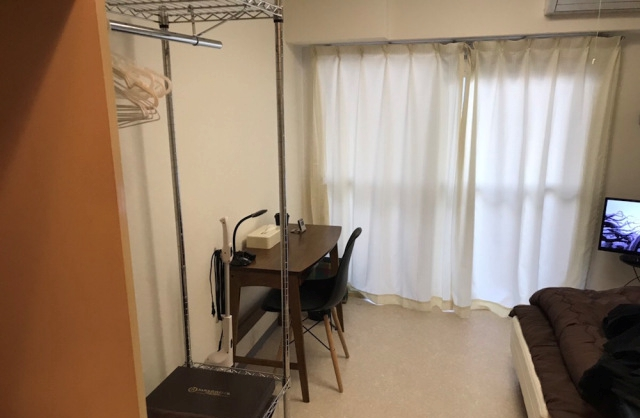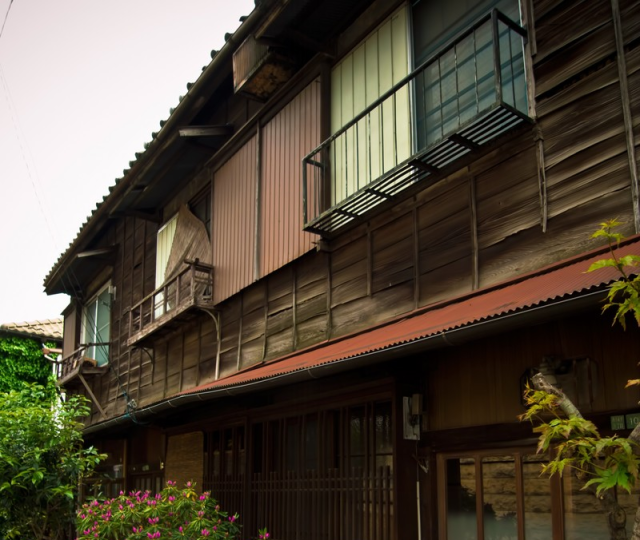
Japan’s capital is seeing an increasing number of boarding house options, but is it the right choice for you?
Getting an apartment in Tokyo can be an expensive undertaking, and we’re not just talking about the cost of rent. In addition to the monthly chunk of cash you’ll need to be giving to your landlord, there are also security deposits, insurance fees, and key money that you’ll usually need to pay before spending a single night in the apartment, with the total move-in costs often being equivalent to several months’ rent. Then there’s the cost of furnishing the apartment, since in many cases apartments in Japan are little more than walls, so you’ll have to buy your own interior lighting, refrigerator, air conditioner, and cooking range.
That’s a huge outlay if you’re just transitioning to life in Tokyo, especially if you haven’t finalized your work or school plans and might want to be moving again in a few months if you get a job or enroll in a school that’s a long commute away. One way to avoid these costs and commitments, though, is by staying in a “share house,” as Japan calls its boarding houses.
Our Japanese-language writer Hirazi spent two years in a share house in Tokyo’s Itabashi Ward, and we asked him to give us a rundown on the pros and cons of living in one.
● The house
“I lived in a two-story house in Itabashi,” recalls Hirazi, “There was a single entrance…The entryway where you took your shoes off before heading inside had so many shoes in it that there was hardly anywhere to step.”
Hirazi’s house was for men only (though Japan also has women-only and co-ed share houses), and while the exact occupant count fluctuated, most of the time there was a total of about 10 guys living under the same roof. Hirazi was about 30 years old when he moved in, which put him in the middle of the pack age-wise, with the other tenants ranging in age from roughly 20 to 40. They came from various walks of life: some were students, others full-time company employees, and still others worked a variety of part-time jobs to make ends meet.
There was a common-use kitchen and living room/dining area, as well as a shared bath/shower room, restroom, and laundry area. Bedrooms were private, though, and Hirazi’s was a very modest 6.6 square meters (71 square feet).
● The good
Hirazi’s room came with some basic furnishings. There was a bed, which is actually a bit of a luxury in Japan, where many people in small apartments sleep on futon mats instead. He also had a desk, chair and a free-standing rack to hang his clothes on, and so his basic furniture needs were all already met when he moved in.
The rent was also extremely cheap, partially because the house itself was on the older side (it had been recently renovated, but Hirazi still encountered cockroaches frequently in the summer). Hirazi’s monthly payment was 38,000 yen (US$340), and that included all of his utilities (electricity, water, and gas) and even Internet service. By comparison, the average monthly cost for a studio apartment in that same ward of Tokyo is 73,900 yen, so he was just about cutting his rent in half by living in the share house.
Hirazi also lucked out in that the owners of his share house contracted with a cleaning company to regularly come in and clean the common-use areas. This isn’t the norm, but it was a very welcome perk which meant that he only had to worry about keeping his bedroom clean.
He was also fortunate in that his fellow tenants were a friendly, communicative bunch, with a wide range of experiences who made them interesting and insightful to talk with. “Sometimes, someone would even cook up a big batch of food and we’d share it,” he remembers.
● The bad
That said, there’s a drawback to living with a bunch of talkative people too. “My bedroom was right next to the common-use area,” Hirazi says, and since the house was originally designed as a single family home, the interior walls didn’t have the same level of sound-proofing as divisions between separate apartments. If there was a lively conversation going on in the kitchen, he could hear it in his bedroom, and if someone was running the washing machine late at night, the whirring and whooshing of the cylinder and hoses made it hard to sleep. “My favorite possession in those days ended up being not my brand-new smartphone, but my brand-new earplugs.”
Speaking of washing machines, his house had two, but even then, with 10 people sharing them it was always a competition to try to get a load in before someone else’s clothing occupied it. Then there was the time one of the machines broke down, leaving just one for everyone and making the wait for an empty slot twice as long.
While Hirazi was happy to have a bed, the single piece of furniture took up about half of his bedroom floor space, and so it also ended up doubling as his personal-use sofa. “If I was in my room, I was basically always on my bed,” he says, and after a year or so of constant use, it actually collapsed and needed to be repaired.
Oh, and even though they had a professional cleaning staff come by periodically, you can only keep a house so clean with 10 full-grown adults living it. “Once a week,” Hirazi tells us, “the shower drain would get clogged up with hair.”
● The final verdict
But despite some unpleasant aspects, looking back, Hirzai is glad he spent those two years living in a share house. “I got to meet a lot of people and learn about a lot of different lifestyles,” he says, but even that’s not what he liked the most.
“The best part was having someone say ‘Welcome home’ when you got back at the end of the day,” says Hirazi, who’s since moved into a bachelor apartment that he has all to himself. “You’d have a hard day at work, but after you walked in the door, you’d run into one of the other people living there and they’d give you a smile and say ‘Welcome home.’ Sure, there were things that were inconvenient about living there, but sometimes I miss hearing those words so much.”
Top image ©SoraNews24
Insert images: Pakutaso (1, 2, 3, 4)
● Want to hear about SoraNews24’s latest articles as soon as they’re published? Follow us on Facebook and Twitter!
[ Read in Japanese ]





 Tokyo has a share house for people who want to be pro gamers, comes furnished with gaming PCs
Tokyo has a share house for people who want to be pro gamers, comes furnished with gaming PCs Ikea Japan offering fully furnished apartment to rent for less than a dollar a month
Ikea Japan offering fully furnished apartment to rent for less than a dollar a month What to do if you want to lower your apartment rent or avoid paying key money in Japan
What to do if you want to lower your apartment rent or avoid paying key money in Japan Apartments with no bath or shower rising in popularity among young Tokyoites, report says
Apartments with no bath or shower rising in popularity among young Tokyoites, report says How much money do you need to live in your own apartment in Japan?【Survey】
How much money do you need to live in your own apartment in Japan?【Survey】 Japan’s new difficult-to-drink-from beer glass protects your liver, but it’s a brutal experience
Japan’s new difficult-to-drink-from beer glass protects your liver, but it’s a brutal experience How to order snacks on a Shinkansen bullet train in Japan
How to order snacks on a Shinkansen bullet train in Japan New Pokémon ice cream, dessert drinks, and cool merch coming to Baskin-Robbins Japan【Pics】
New Pokémon ice cream, dessert drinks, and cool merch coming to Baskin-Robbins Japan【Pics】 Demon Slayer: Kimetsu no Yaiba gets new roller coaster attractions and food at Universal Studios Japan
Demon Slayer: Kimetsu no Yaiba gets new roller coaster attractions and food at Universal Studios Japan Caffeinated ramen for gamers that you can eat with one hand going on sale in Japan
Caffeinated ramen for gamers that you can eat with one hand going on sale in Japan Burger King Japan suddenly adds Dr. Pepper and Dr. Pepper floats to its menu nationwide
Burger King Japan suddenly adds Dr. Pepper and Dr. Pepper floats to its menu nationwide “The most Delicious Cup Noodle in history” – Japan’s French Cup Noodle wins our heart【Taste test】
“The most Delicious Cup Noodle in history” – Japan’s French Cup Noodle wins our heart【Taste test】 New samurai glasses are Japan’s latest weird must-have souvenir
New samurai glasses are Japan’s latest weird must-have souvenir Doraemon found buried at sea as scene from 1993 anime becomes real life【Photos】
Doraemon found buried at sea as scene from 1993 anime becomes real life【Photos】 Hello, cosmetics! Clinique teams up with Hello Kitty this summer for first-time collaboration
Hello, cosmetics! Clinique teams up with Hello Kitty this summer for first-time collaboration Nintendo history you can feel – Super NES, N64, and GameCube controllers become capsule toys
Nintendo history you can feel – Super NES, N64, and GameCube controllers become capsule toys Starbucks releases a cute Frappuccino and Unicorn Cake…but not in Japan
Starbucks releases a cute Frappuccino and Unicorn Cake…but not in Japan Kyoto Tower mascot termination reveals dark side behind cute Japanese characters
Kyoto Tower mascot termination reveals dark side behind cute Japanese characters McDonald’s Japan’s Soft Twist Tower: A phantom ice cream only sold at select branches
McDonald’s Japan’s Soft Twist Tower: A phantom ice cream only sold at select branches Yabai Ramen: What makes this Japanese ramen so dangerous?
Yabai Ramen: What makes this Japanese ramen so dangerous? Finally! Nintendo Japan expands Switch 8-bit controller sales to everybody, Online member or not
Finally! Nintendo Japan expands Switch 8-bit controller sales to everybody, Online member or not Japanese government wants to build luxury resorts in all national parks for foreign tourists
Japanese government wants to build luxury resorts in all national parks for foreign tourists To combat declining birth rate, Japan to begin offering “Breeding Visas” to foreigners
To combat declining birth rate, Japan to begin offering “Breeding Visas” to foreigners 10 things you should buy at 7-Eleven in Japan
10 things you should buy at 7-Eleven in Japan Studio Ghibli releases anime heroine cosplay dresses that are super comfy to wear
Studio Ghibli releases anime heroine cosplay dresses that are super comfy to wear Woman charged for driving suitcase without a license in Osaka
Woman charged for driving suitcase without a license in Osaka Studio Ghibli unveils My Neighbour Totoro miniature house model
Studio Ghibli unveils My Neighbour Totoro miniature house model Kyoto experiencing problems with foreign tourists not paying for bus fares, but not on purpose
Kyoto experiencing problems with foreign tourists not paying for bus fares, but not on purpose Fighting mild hunger with a Japanese soda that turns into jelly in the stomach【Taste test】
Fighting mild hunger with a Japanese soda that turns into jelly in the stomach【Taste test】 Studio Ghibli’s Howl’s Moving Castle tapestry unveiled in Japan for first time
Studio Ghibli’s Howl’s Moving Castle tapestry unveiled in Japan for first time McDonald’s new Happy Meals offer up cute and practical Sanrio lifestyle goods
McDonald’s new Happy Meals offer up cute and practical Sanrio lifestyle goods Sales of Japan’s most convenient train ticket/shopping payment cards suspended indefinitely
Sales of Japan’s most convenient train ticket/shopping payment cards suspended indefinitely Sold-out Studio Ghibli desktop humidifiers are back so Totoro can help you through the dry season
Sold-out Studio Ghibli desktop humidifiers are back so Totoro can help you through the dry season Japanese government to make first change to romanization spelling rules since the 1950s
Japanese government to make first change to romanization spelling rules since the 1950s Foreigner’s request for help in Tokyo makes us sad for the state of society
Foreigner’s request for help in Tokyo makes us sad for the state of society Ghibli founders Toshio Suzuki and Hayao Miyazaki contribute to Japanese whisky Totoro label design
Ghibli founders Toshio Suzuki and Hayao Miyazaki contribute to Japanese whisky Totoro label design Tokyo’s most famous Starbucks is closed
Tokyo’s most famous Starbucks is closed Princesses, fruits, and blacksmiths: Study reveals the 30 most unusual family names in Japan
Princesses, fruits, and blacksmiths: Study reveals the 30 most unusual family names in Japan What’s inside the Super Mario lucky bag from Japan?
What’s inside the Super Mario lucky bag from Japan? What happens when two hard-core otaku get married? The inside of their house turns into THIS
What happens when two hard-core otaku get married? The inside of their house turns into THIS This Tokyo apartment complex lets you paint your room, offers community BBQ and camping gear
This Tokyo apartment complex lets you paint your room, offers community BBQ and camping gear Living with ghosts: The rising popularity of ‘death rooms’ in Japan
Living with ghosts: The rising popularity of ‘death rooms’ in Japan Neighbors Kamikitazawa introduces us to the cool side of shared Tokyo apartment rentals
Neighbors Kamikitazawa introduces us to the cool side of shared Tokyo apartment rentals Chinese people busted sleeping in beds at Ikea in new online video
Chinese people busted sleeping in beds at Ikea in new online video Tokyo man arrested for putting brother’s skull out for recycling collection
Tokyo man arrested for putting brother’s skull out for recycling collection Living with coronavirus in a Japanese share house
Living with coronavirus in a Japanese share house This remote island guest house may have converted our “private rooms only” traveling reporter
This remote island guest house may have converted our “private rooms only” traveling reporter Crazy-cheap Japanese apartment for less than 140 bucks a month comes with headaches every day
Crazy-cheap Japanese apartment for less than 140 bucks a month comes with headaches every day Create your dream share house and win a chance to live there rent-free for two years
Create your dream share house and win a chance to live there rent-free for two years 200,000 yen-per-night Airbnb is the successor to Tokyo’s famous Nakagin capsule apartments【Pics】
200,000 yen-per-night Airbnb is the successor to Tokyo’s famous Nakagin capsule apartments【Pics】 These apartments are crazy-small even by Tokyo standards, and super-popular with young people
These apartments are crazy-small even by Tokyo standards, and super-popular with young people Author breaks down economics of anime, tells us exactly what Sailor Moon’s house is worth
Author breaks down economics of anime, tells us exactly what Sailor Moon’s house is worth Crazy Japanese man achieves dream of filling his bathtub with curry rice【Photos】
Crazy Japanese man achieves dream of filling his bathtub with curry rice【Photos】
Leave a Reply